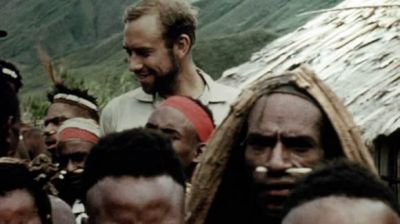
Michael Alpers has spent his life studying kuru and tropical infectious diseases, mostly in Papua New Guinea. His work on kuru opened up a new field of human medicine and led to the discovery of prions.
The joy of discovery in science usually comes in small increments. My most exciting moment was a big one, when I realised that we had solved the puzzle of kuru. All our information fitted together like a jigsaw puzzle—the fieldwork with patients, talking with the local people and learning about their cultural practices, and the experimental work in the lab. This degenerating disease of the brain, restricted to a remote area of the Eastern Highlands of Papua New Guinea, was a complete mystery when it was first investigated by medical science in the 1950s.
From the public health point of view pneumonia and malaria are much more significant than kuru. Pneumonia is the major cause of death in young children in the tropics and thus in the world. Malaria also kills millions there. In tropical communities adults have acquired immunity to pneumonia—until they get old and lose it—and malaria. At the Papua New Guinea Institute of Medical Research, where I was director for 23 years, we did long-term studies to try to understand this immunity. We worked on developing and testing pneumonia and malaria vaccines to enable children to establish their own immunity through mild infections. We made good progress, but we still have a long way to go.

Prion infections can incubate very slowly (for as long as 50 years or more). Most people have heard of mad cow disease, a prion disease which can be transmitted from cattle to humans through eating infective brain material in beef sausages and hamburgers. Kuru was the model that enabled scientists to work out how mad cow disease was transmitted. I have been working on kuru for more than 50 years and it seems like such a short time. We have learned a lot about prions and the diseases they cause but it will take 50 years to find out enough to prevent and cure these diseases. I am sure we will find that prionic processes have an important role in normal biological functions, not just in strange and rare diseases of the brain.
It’s hard to choose—I have been inspired by so many people in science, from my teachers in school to authors such as Paul de Kruif (Microbe hunters) and Hans Zinsser (Rats, lice and history), and the biographies of Marie Curie and Ernest Rutherford. Charles Darwin with his beetles and Alfred Russel Wallace with his explorations, and their interaction and respect for each other over their independently derived theory of evolution through natural selection, have inspired me. Alexander von Humboldt was an integrated interdisciplinary scientist who also got into tropical rainforests, and feebly I have tried to emulate him. I enjoy narratives in science as well as literature. Francis Crick and Jim Watson worked out the structure of DNA, but the person I identify with most in that story is (biophysicist) Rosalind Franklin.
I remember the excitement of science: I just could not get enough of it. I studied physics, chemistry and mathematics, and I’d love to have studied human biology, botany and geology too. I wasn’t all that interested in classroom experiments—it was the unexpected richness of all these new concepts connected to the world around me that turned me on. It wasn’t only science: I was equally passionate about literature, language and history. You could probably say that I was an easy student to have in class!
© 2025 Australian Academy of Science